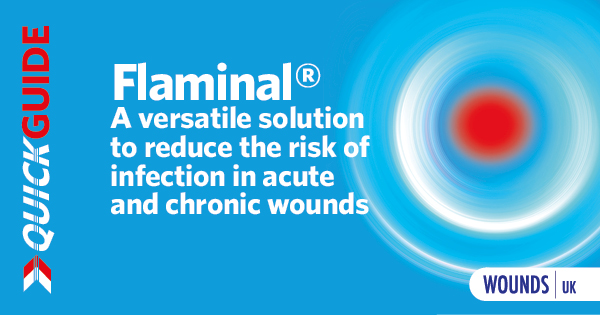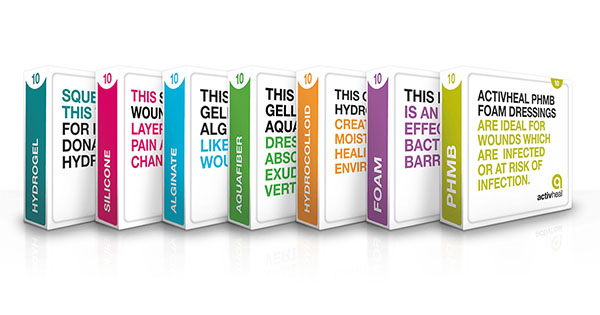Use of Flaminal® in practice
Flaminal® is a primary wound dressing, categorised as an enzyme alginogel. Composed of a hydrated alginate matrix alongside its unique GLG — glucose oxidase combined with lactoperoxidase, stabilised by guaiacol antimicrobial enzyme system, it is safe to use on skin and wound tissue. Its various modes of action eliminate the need for multiple products.
Antimicrobial activity of the GLG enzyme system
Within the gel, Flaminal® contains an antimicrobial GLG enzymatic complex. These naturally occurring enzymes are found in milk and secretions of exocrine glands, such as saliva, tears and cervical mucus.
They work by producing reactive oxygen radicals that destroy bacterial cell walls and fungal growth, similar to our innate white cell defences (White, 2006). Flaminal® acts only on bacteria that have been absorbed into the gel matrix and not within the wound bed, preserving essential skin and tissue without cytotoxicity. It also reduces biofilm-released bacteria, protecting wounds from infection (Cooper, 2013).
To date, no instances of antimicrobial resistance (AMR) have been recorded with Flaminal® (Gottrup et al, 2013; Flen Health internal data on file, 2021).
Antimicrobial stewardship (AMS)
Widespread, inappropriate antimicrobial use to treat both acute and chronic wounds with spreading and systemic infections has contributed to the rise of AMR. If no action is taken, it is estimated that antimicrobial drug-resistant diseases could cause 10 million deaths each year by 2050 (Interagency Coordinating Group on Antimicrobial Resistance, 2019).
Antimicrobial stewardship (AMS) is an approach that aims to reduce the risk of AMR through education and public awareness. It encourages clinicians to use antimicrobial treatment at the appropriate dose and duration, only when necessary, thereby avoiding unnecessary use in non-infected wounds.
The development of innovative antimicrobial wound care alternatives with minimal cytotoxicity and adverse risks, such as Flaminal®, is a key aspect of AMS and important to achieve the best clinical outcomes for patients.
Download the full resource below.







